Japandi Interior in Malaysia: Designing a Calm, Minimalist Home for Tropical Living
- What Is Japandi Interior and Why Malaysians Love It
- 3 Key Elements of Japandi Interior Design
- 3 Benefits of Japandi Style for Malaysia's Tropical Climate
- Home Type Inspirations: Japandi Design Ideas for Malaysian Living Spaces
- Where to Find Japandi Furniture in Malaysia
- 3 Final Tips for Creating Your Japandi Home
- Frequently Asked Questions (FAQ)
- From Inspiration to Atmosphere: Japandi Made Yours
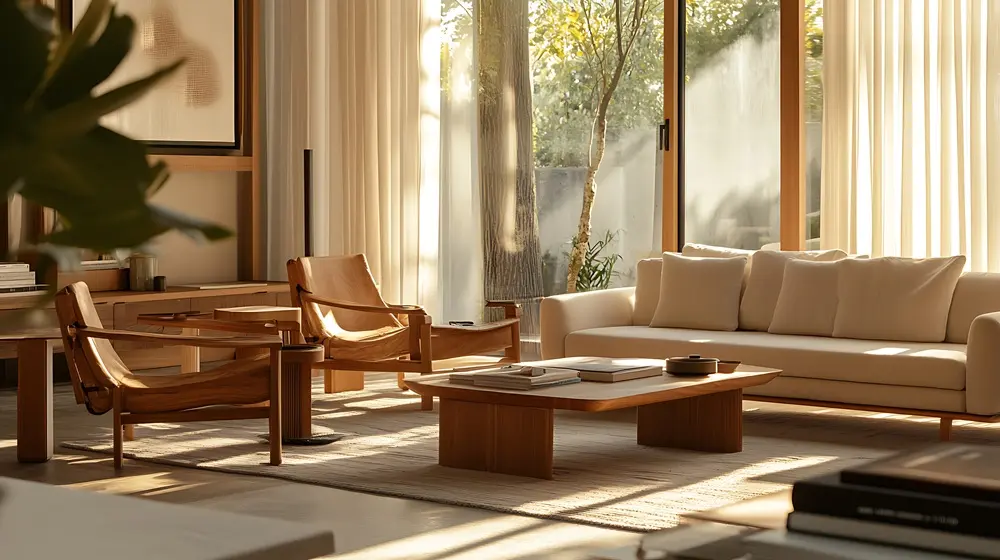
In recent years, Japandi interior design has quietly taken over design blogs, Pinterest boards, and minimalist homes worldwide. Fusing the warm simplicity of Scandinavian style with the serene elegance of Japanese aesthetics, the Japandi concept offers a refreshing approach to tropical living, especially in Malaysia.
Due to its tropical climate, Malaysian homes benefit from Japandi's breathable layouts, natural materials, and focus on calm, grounded spaces. Whether you live in a high-rise condo, a cozy apartment, or a landed property, Japandi interior design can be adapted to suit humid weather, compact spaces, and need for year-round comfort.
What Is Japandi Interior and Why Malaysians Love It
A blend of Japanese minimalism and Scandinavian warmth, Japandi interior design harmonizes clean lines, functionality, natural textures and nature-inspired aesthetics. Think neutral color palettes, low-profile furniture, and a deep respect for both craftsmanship and space.
Japandi is more than an aesthetic, it is a philosophy rooted in purpose and restraint. It balances hygge (the Scandinavian concept of cozy comfort) and wabi-sabi (the Japanese appreciation for imperfection), which resonates with many Malaysians seeking a more mindful, slower-paced lifestyle at home.
In Malaysia's warm, humid environment, natural materials like linen, bamboo, and rattan are breathable and better suited for tropical living. Japandi's calming, clutter-free philosophy is perfect for creating relaxation zones at home, a welcome retreat from city life and digital overwhelm.
Moreover, Japandi's subtle elegance works well with Malaysia's multicultural home styles, adapting easily to local tastes whether you are decorating a modern condo in Kuala Lumpur or a tropical terrace home in Penang.
3 Key Elements of Japandi Interior Design
Color Palette
Expect soft wood tones like beige, off-white, taupe, and soft grey. These hues reflect natural light, creating a soothing and airy feel in Malaysian homes. Use soft whites in bedrooms to encourage calm, and clay or stone tones in the living room to build warmth.
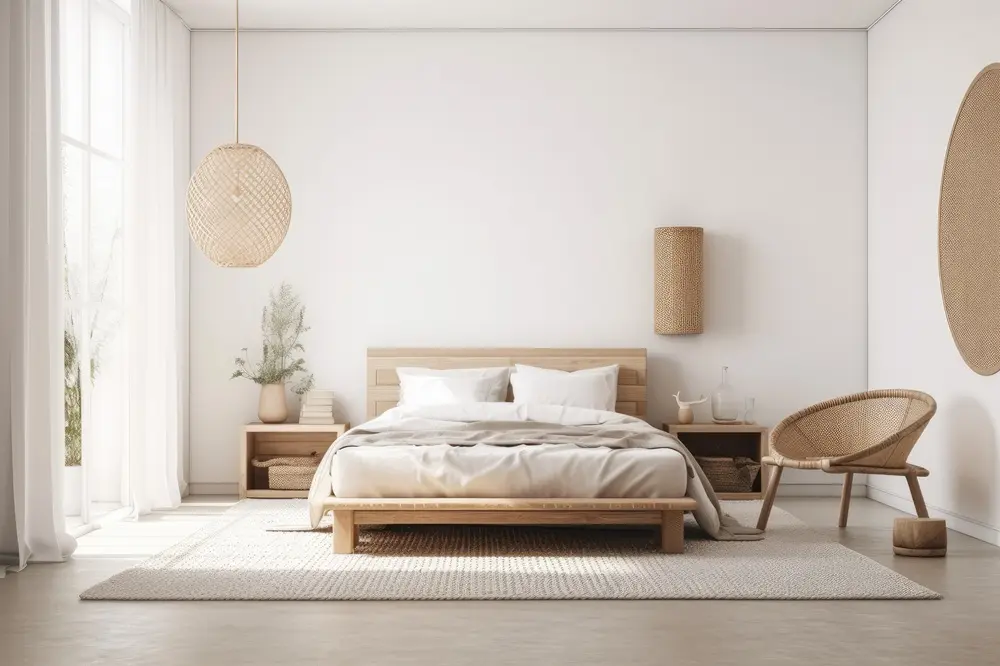
In bolder variations like Dark Japandi, you will find deep charcoals and dark walnut tones paired with raw textures, perfect for creating a more dramatic, grounding vibe in small rooms.
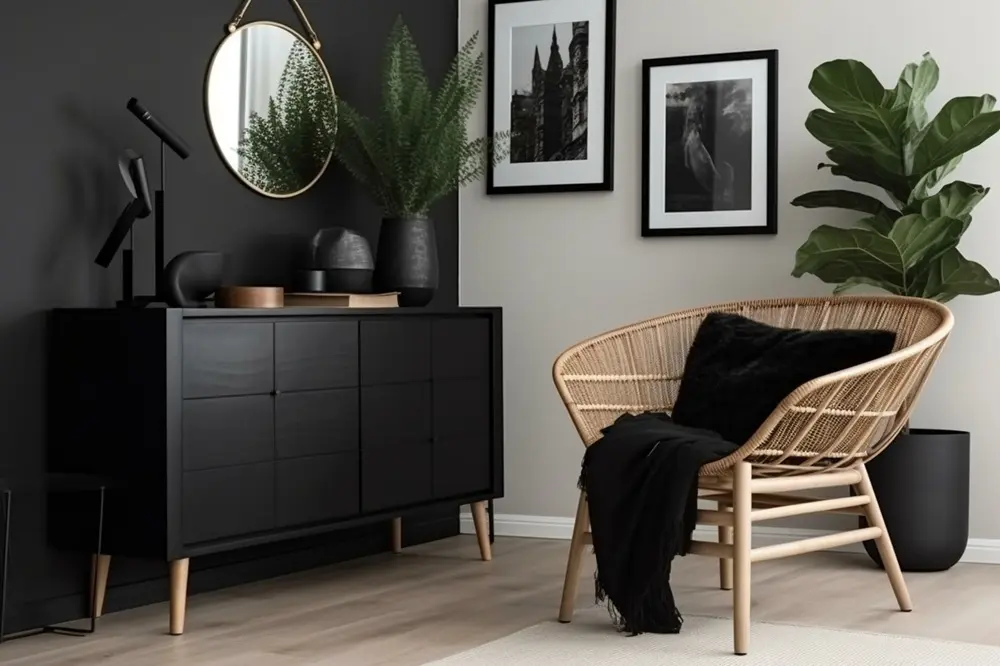
Materials
Rattan, solid wood, linen, ceramic, jute, and bamboo are the cornerstones of Japandi. These materials naturally regulate temperature and work beautifully with Malaysia's high humidity. For example, a rattan chair is not just stylish but breathable and ideal for warm climates.
Texture is also key, pair rough ceramics with soft linen or smooth wood to build quiet sophistication. Add stone or clay accessories for a subtle rustic charm.
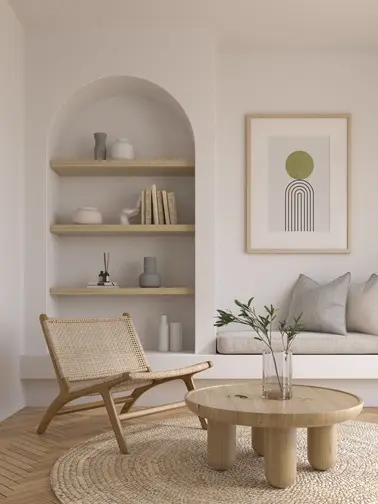
Layout
Japandi encourages simplicity in spatial planning, favoring open layouts, minimal partitions, and negative space. Fewer but better-chosen furniture pieces, such as a low TV cabinet, platform bed, or open dining table, go a long way in creating a relaxed and functional home.
In Malaysian homes, this approach also improves airflow and natural light distribution — crucial for cooling and comfort.
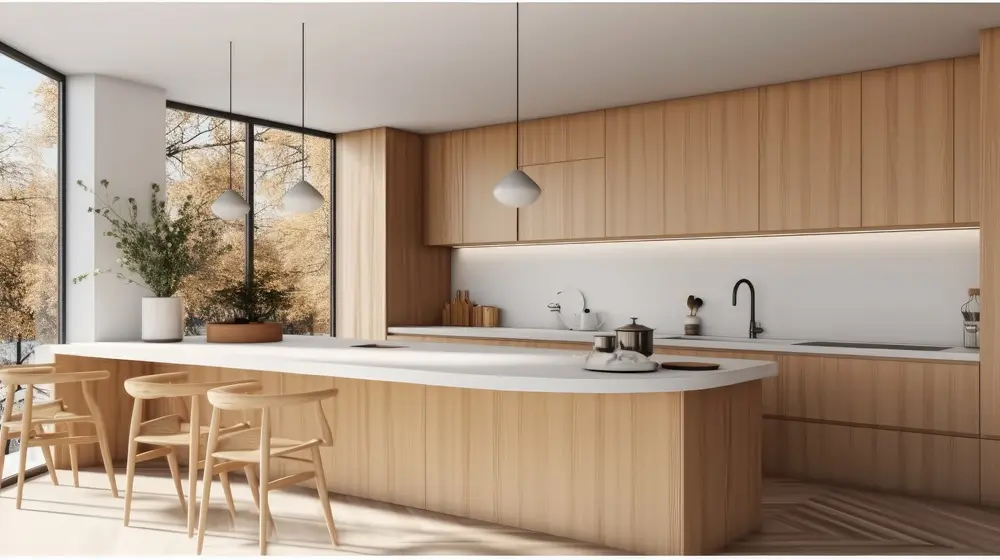
3 Benefits of Japandi Style for Malaysia's Tropical Climate
Breathable Materials
Natural materials such as rattan, linen, and cotton breathe better than synthetics and dry more quickly in humid conditions. These materials grow more beautiful with age and use, reflecting the Japandi appreciation for natural ageing and quiet elegance.

Minimalism for Simple Living
Japandi helps declutter your home and your mind. With multifunctional furniture and a mindful selection of refined, minimalist decor, you can reduce everyday hassle while creating a space-saving and efficient home—perfect for busy Malaysian lifestyles.
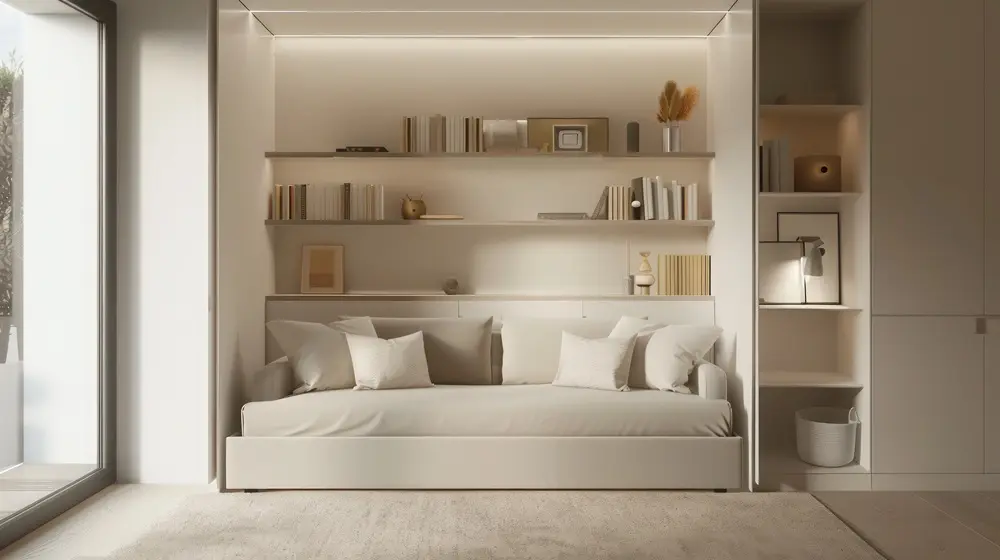
Indoor Greenery Year-Round
Malaysia's warm climate allows homeowners to enjoy lush greenery indoors all year long. With reference to our Japandi Indoor Plants Guide, several heat-tolerant plants can thrive in Malaysian homes while staying true to the Japandi aesthetic.
The Snake Plant is an excellent choice. With its architectural form, low water needs, and ability to purify air, it suits minimal interiors and busy lifestyles alike. Place one in a neutral-toned ceramic pot for a calming corner accent.

Another ideal plant is the Fiddle Leaf Fig. Its broad, glossy leaves add a touch of sculptural greenery to your living room or bedroom. While it loves light, it also tolerates warm, shaded indoor corners. With the right container and care, it brings Japandi harmony into tropical homes with elegance.
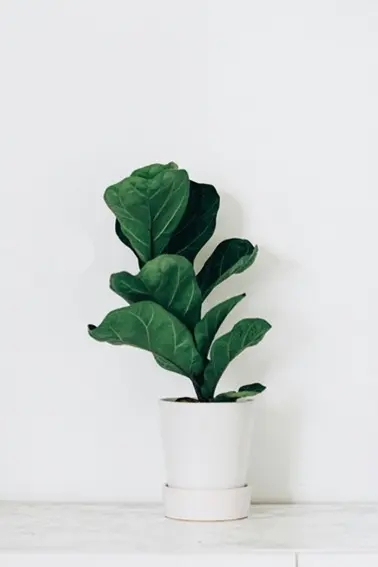
Home Type Inspirations: Japandi Design Ideas for Malaysian Living Spaces
Japandi Condo Interior Design: Small Space, Big Impact
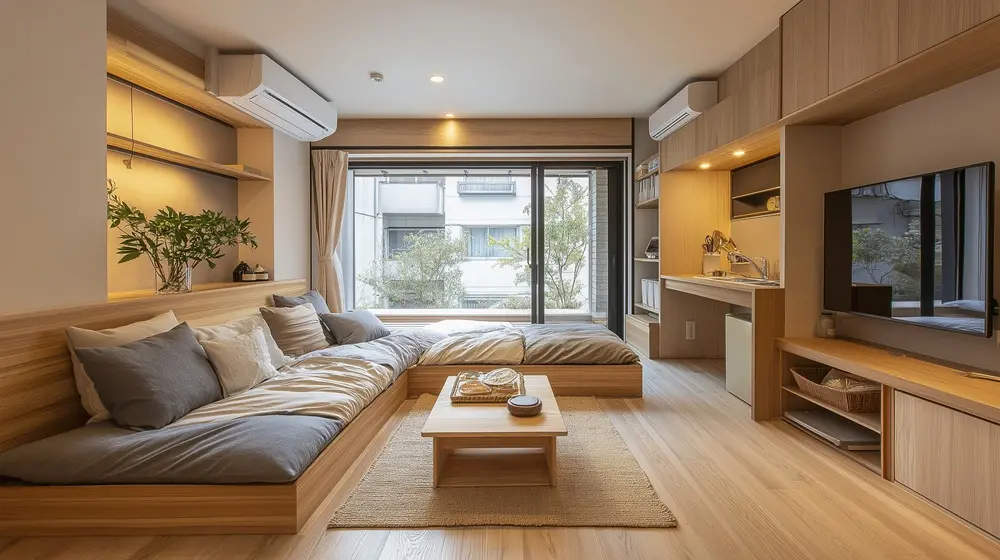
Even with limited square footage, Japandi condo interior design maximizes space and calm. The key lies in thoughtful planning and the clever use of multifunctional elements. Incorporate vertical storage solutions such as tall shelving units and wall-mounted cabinets to free up valuable floor space. Floating shelves and built-in cabinetry also keep the overall look neat and uncluttered.
Choose a neutral color palette with soft beige, greys, or warm wood tones to visually open up the area. Natural light-colored wood flooring brings warmth and serenity, while concrete, with its understated texture, also harmonizes with Japandi's minimalist and tranquil spirit. For lighting, opt for warm, diffused lights and concealed fixtures that add ambiance without visual clutter.
Balconies in condos are perfect for a Japandi-style retreat. Transform yours using wood decking or pebble flooring for a tactile, natural feel underfoot. Furnish it with rattan chairs and ceramic planters, and introduce greenery with easy-to-care-for snake plants or bonsai. Complete the space with bamboo blinds, which filter light while allowing air to circulate, helping you create an outdoor escape infused with simplicity.
Japandi Style Interior Apartment for Urban Living
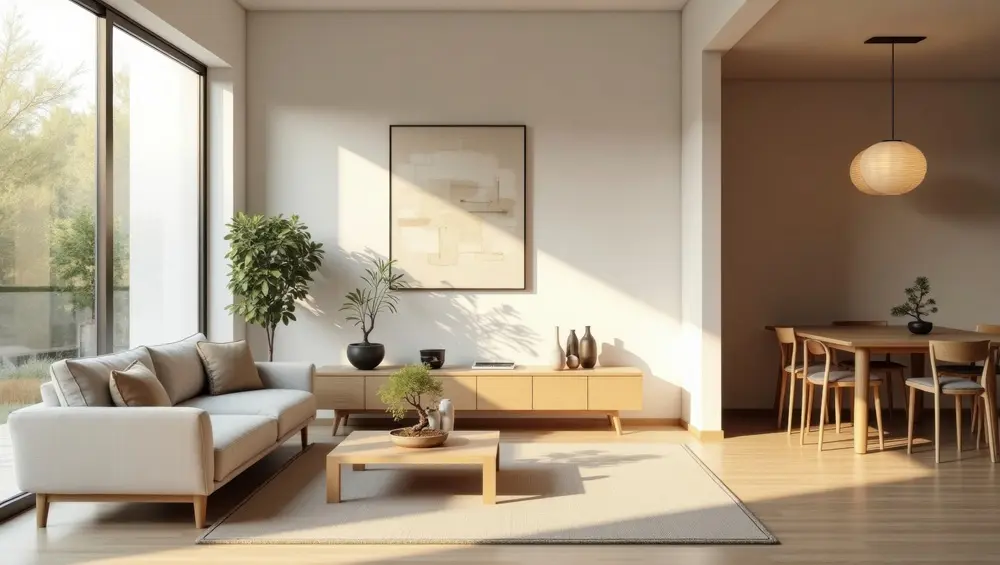
Perfect for renters and city dwellers, Japanese interior apartment styles combine space-saving techniques with visual calm. Select foldable or multi-purpose furniture, such as a dining table that doubles as a work desk, maintaining function while minimizing visual bulk.
Layer the space with neutral rugs in jute to add warmth and texture without overwhelming the floor area. Use sheer curtains or go curtain-free to allow soft daylight to flood the room. This enhances the airy feel and aligns with Japandi's principle of openness.
Keep furniture low to the ground, such as platform beds, neutral-colored floor cushions, or minimalist coffee tables. These create a sense of openness and connect the living experience with the grounded elegance of Japanese interiors. To further amplify space, place mirrors strategically to reflect light and expand the visual boundaries of the room.
Japandi Touches for Landed Houses in Malaysia
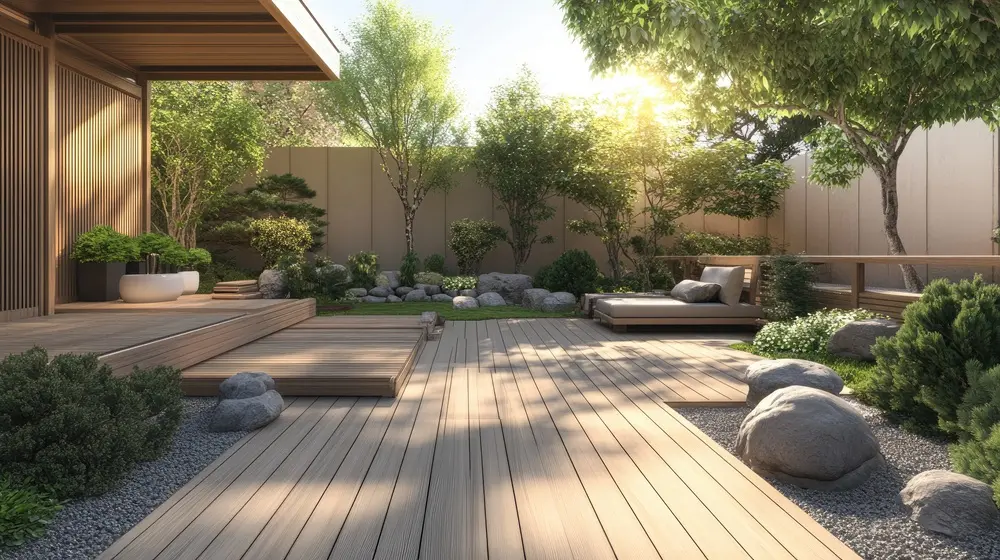
Larger homes allow you to explore deeper integration of Japandi architectural principles to create an immersive, nature-connected experience. Start with the exterior by integrating extended eaves or Engawa-style overhangs, inspired by traditional Japanese architecture. These deep rooflines offer shelter from Malaysia's intense sun and tropical downpours, while creating shaded transitional zones between indoor and outdoor areas.
Instead of conventional interior walls, consider using sliding doors or timber louvers. These allow for spatial separation while promoting cross-ventilation and visual lightness. Shoji-style sliding panels with frosted glass or woven wood add a gentle touch of tradition and elegance.
Inside, adopt an open-concept layout that connects living, dining, and kitchen areas fluidly. Embrace the Japanese design concept of "ma" (間)—the pause or space between elements, to guide your floorplan. Avoid overfurnishing, highlight emptiness as a design feature, letting each area breathe naturally.
Use natural materials such as solid wood beams, clay tiles, and stone finishes to bridge interior and exterior spaces seamlessly. When paired with minimalist lighting and curated decor, these features allow larger homes to retain the warmth, simplicity, and tranquility that define the Japandi spirit.
Where to Find Japandi Furniture in Malaysia
There is no need to import items to achieve the Japandi look. A wide range of furniture and decor options are locally available, making this style both accessible and practical for Malaysian homeowners.
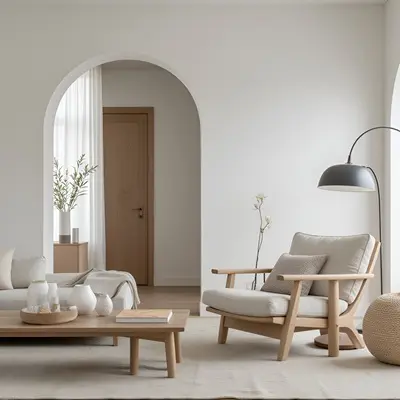
Online Retailers
Popular e-commerce platforms like Shopee and Lazada offer a variety of Japandi-style items. Search for keywords like "Japandi TV cabinet," "rattan chair," or "wooden low table" to find curated pieces that fit the aesthetic. These platforms are ideal for budget-conscious buyers who want to style their home affordably.
Taobao (Malaysia) is another great option, especially if you are looking for more unique or artisanal pieces at competitive prices. Do be mindful of sizing, materials, and shipping costs.
Local Brands and Concept Stores
Local furniture retailers such as KARE, Commune, and IKEA offer pieces that blend Scandinavian influences with natural materials, aligning well with Japandi interiors. IKEA in particular, provides a range of minimalist furniture with neutral tones and natural wood finishes, ideal for those starting their Japandi journey.
In addition, specialty furniture studios in Klang Valley and Penang now offer Japandi-inspired collections, including bathroom vanities, low-profile bed frames, modular storage, and handcrafted dining sets. Visiting these showrooms in person allows you to experience the texture and build quality of natural materials firsthand.
3 Final Tips for Creating Your Japandi Home
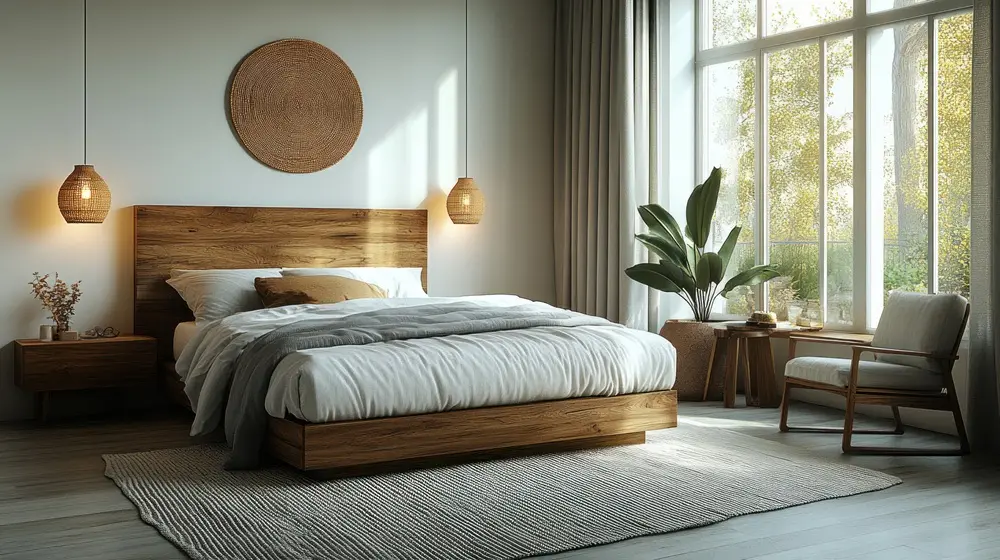
Know When to DIY or Hire a Pro
If you are planning a complete renovation or structural change, hiring an interior designer with Japandi experience can be invaluable. They will help translate your vision into a cohesive, livable space. For smaller updates, you can go the DIY route by building a mood board, gathering material samples, and sourcing furniture gradually for a more intentional transformation.
Support Local Artisans
Malaysia is home to talented craftsmen who specialize in sustainable materials such as rattan, bamboo, ceramics, and handwoven textiles. Incorporating locally made items not only supports small businesses but also adds a unique, authentic dimension to your home.
Keep a Japandi Journal
Document your process by keeping a dedicated notebook or digital file. Include color palette references, furniture dimensions, and plant care tips. This helps maintain visual consistency and prevents impulsive purchases that might clash with the overall look.
Frequently Asked Questions (FAQ)
Q1: I have multiple rooms — how can I keep a cohesive Japandi style without making every room feel the same?
Maintain a unified Japandi aesthetic while giving each room its own identity by varying your color palettes. Use light woods and soft neutrals in bedrooms, and explore darker tones or accent colors like sage green or terracotta in the kitchen, living and study rooms. This creates visual interest while staying within the Japandi philosophy.
Q2: How can Japandi interiors be adapted to feel cooler in Malaysia's hot climate?
Select raised furniture like Japanese joinery bed frames or sofas for better airflow. Choose breathable materials such as linen, cotton, and rattan for upholstery and curtains. Use natural fiber rugs like jute or bamboo mats instead of thick carpets to keep spaces feeling light and ventilated.
Q3: Where and how should I decorate with plants in a Japandi home in Malaysia?
Place one large statement plant in a bright corner or add a few small pots on floating shelves. Use neutral or ceramic planters to match the overall aesthetic. Avoid overcrowding — Japandi celebrates negative space, so let each plant breathe within its environment.
Q4: How can I keep Japandi-style plants healthy in Malaysia's intense sun?
Position plants near east- or north-facing windows for gentle, indirect light. Shield them from harsh afternoon sun with sheer curtains or bamboo blinds. Group plants with similar watering needs to create low-maintenance microclimates.
Q5: How does Japandi compare to other popular interior styles in Malaysia?
Japandi shares modern design's clean lines but feels warmer and more grounded due to its use of natural materials. Unlike the bohemian style, which emphasizes eclectic layering, Japandi is quiet, refined, and minimal. It also requires less upkeep, making it ideal for Malaysian homeowners seeking balance between style and simplicity.
From Inspiration to Atmosphere: Japandi Made Yours
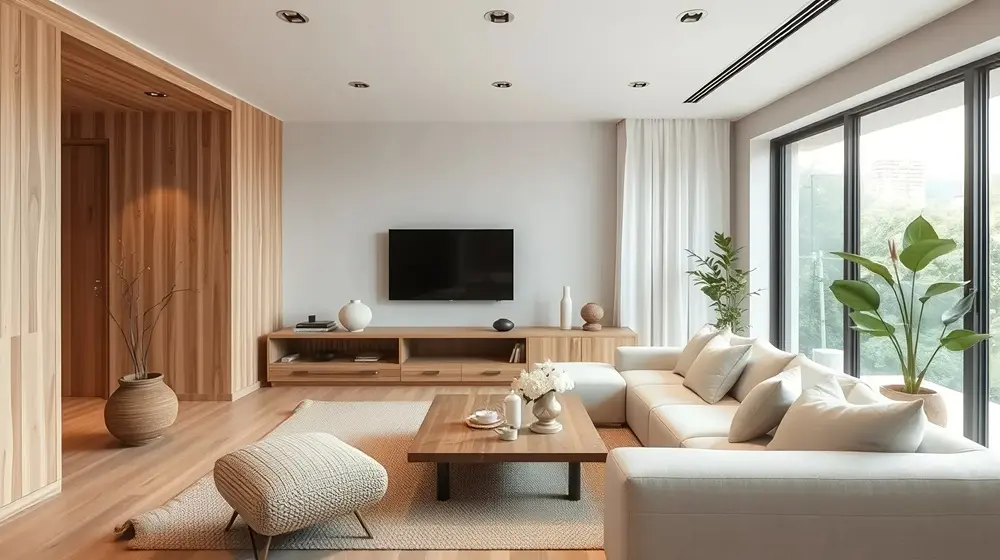
From Japandi condo interior design to serene terrace homes, this style offers a harmonious, grounded approach to Malaysian living. With its focus on breathable materials, natural light, and mindful simplicity, Japandi is more than just a design trend, it is a lifestyle. Japandi brings beauty, balance, and intentionality to your home.
Start with one room, one piece of furniture, or one plant. Let nature, minimalism, and purpose guide your way to the Japandi home of your dreams.
*Some of the images featured in this article were created using generative AI.

